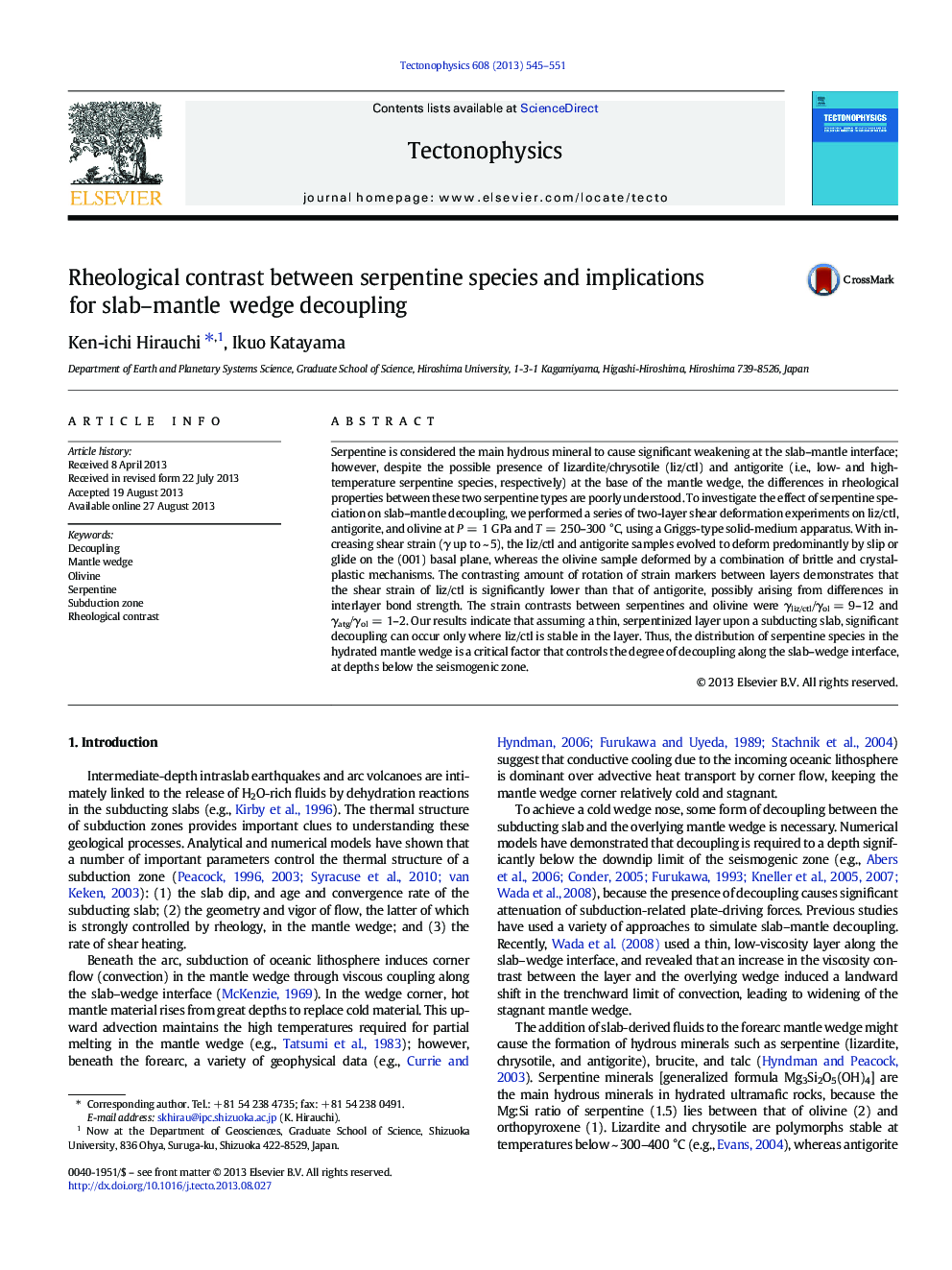| کد مقاله | کد نشریه | سال انتشار | مقاله انگلیسی | نسخه تمام متن |
|---|---|---|---|---|
| 6433979 | 1636779 | 2013 | 7 صفحه PDF | دانلود رایگان |
- We simultaneously deformed lizardite/chrysotile and antigorite in simple shear.
- Lizardite/chrysotile is much weaker than antigorite at mantle wedge conditions.
- The serpentine specimens deform predominantly by slip on the basal plane.
- Plasticity of antigorite is not the main reason for slab-mantle decoupling.
Serpentine is considered the main hydrous mineral to cause significant weakening at the slab-mantle interface; however, despite the possible presence of lizardite/chrysotile (liz/ctl) and antigorite (i.e., low- and high-temperature serpentine species, respectively) at the base of the mantle wedge, the differences in rheological properties between these two serpentine types are poorly understood. To investigate the effect of serpentine speciation on slab-mantle decoupling, we performed a series of two-layer shear deformation experiments on liz/ctl, antigorite, and olivine at P = 1 GPa and T = 250-300 °C, using a Griggs-type solid-medium apparatus. With increasing shear strain (γ up to ~ 5), the liz/ctl and antigorite samples evolved to deform predominantly by slip or glide on the (001) basal plane, whereas the olivine sample deformed by a combination of brittle and crystal-plastic mechanisms. The contrasting amount of rotation of strain markers between layers demonstrates that the shear strain of liz/ctl is significantly lower than that of antigorite, possibly arising from differences in interlayer bond strength. The strain contrasts between serpentines and olivine were γliz/ctl/γol = 9-12 and γatg/γol = 1-2. Our results indicate that assuming a thin, serpentinized layer upon a subducting slab, significant decoupling can occur only where liz/ctl is stable in the layer. Thus, the distribution of serpentine species in the hydrated mantle wedge is a critical factor that controls the degree of decoupling along the slab-wedge interface, at depths below the seismogenic zone.
Journal: Tectonophysics - Volume 608, 26 November 2013, Pages 545-551
